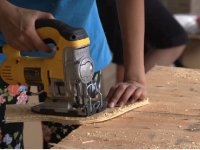What’s Next for PBL?
Your content has been saved!
Go to My Saved Content.Editor's note: The following is an excerpt from Reinventing Project-Based Learning, 2nd Edition, by Suzie Boss and Jane Krauss. The revised and expanded edition was just published by ISTE. As part of Connected Educator Month, the co-authors are hosting an online Reinventing PBL Book Club. (Join the conversation here.)
We don't have a crystal ball, but there's ample evidence to suggest that we're at a PBL inflection point. Increasing numbers of schools and entire districts are adopting project-based learning for at least part of their students' learning experience. Some districts that have had success with PBL at the high school level are starting to introduce this instructional strategy earlier, creating a pipeline that starts in the elementary years. These systemic shifts are happening in public schools, charters, and independent schools.
There's also a groundswell of teachers making the transition to PBL on their own -- sometimes despite less-than-ideal school cultures. Many are finding support through professional learning communities and social networks that take the isolation out of being an innovator.
As we move toward more widespread adoption of PBL, we imagine further reinvention of this powerful method of teaching and learning. Here's a forecast of what's ahead.
Forecast: Deeper Learning through PBL
We expect the phrase "deeper learning" will continue to gain traction to describe the multifaceted outcomes of project-based learning. Deeper learning gets at the increased academic rigor called for in the Common Core State Standards, but it doesn't stop there. It's also about preparing young people to be good citizens, developing their sense of agency. What's more, deeper learning involves the habits of mind, dispositions, and skills like collaboration that are reinforced through PBL.
The Deeper Learning Network, an initiative of the Hewlett Foundation, has identified and connected established school models that exemplify what this vision of teaching and learning is all about. Models include many of the wall-to-wall PBL schools, including High Tech High, the
New Tech Network, Expeditionary Learning, and others. By coming together as a network, they are in a better position to collaborate, share and model best practices, and communicate with the larger education field about how to achieve deeper learning goals. (Read three new studies about Deeper Learning schools, just released by the American Institutes for Research.)
Forecast: Achieving Scale - Thoughtfully
A variety of initiatives are underway to make PBL more accessible to traditional classrooms -- that is, in schools that are not part of PBL networks.
The challenge ahead will be making sure that the best qualities of PBL aren't lost in efforts to achieve greater scale. Scott Hartl, CEO of Expeditionary Learning, has thought hard about what's essential in PBL experiences, whether they last for several months or for a few class periods. His must-have list includes qualities such as "work worth doing," providing students with authentic audiences, and using assessment practices that emphasize formative feedback.
Even in smaller slices, PBL experiences have the potential "to fundamentally change what it means to be a teacher and a student, to ask for work that is worth doing, and to ask students to spend enough time to do it really well," Hartl says. With attention to what's essential about doing PBL well, he adds, "we can get more of those moments that flip the switch for kids."
Forecast: Developing the PBL Mindset
Well-designed projects make meaning memorable, helping students understand and apply academic content. That's the knowledge part of PBL. Equally important are the habits of mind and dispositions that are reinforced through project experiences. With increasing attention to the role of attitude and motivation in learning, we expect more focus on developing the "PBL mindset."
Although habits such as persistence, flexibility, and risk-taking would seem to be natural outcomes of engaging projects, we can't take them for granted. During project planning, it's important to build in enough time for iterative cycles of review, feedback, and revision. It's equally important to model and encourage the positive risk-taking and resilience that enable learners to propose novel solutions and recover from setbacks. Reflection needs to take place across the arc of the PBL experience, as well.
Forecast: Reconsidering When and How Students Learn
Technology-driven trends such as the flipped classroom and the spread of online courses are prompting educators to reconsider when and how students learn. At the same time, some teachers are exploring the value of less structured learning during the regular school day. Designating one class period a week as "20 percent time" or "genius hour" gives students more opportunities to discover and deepen their interests.
These trends have the potential to disrupt traditional education; the role of the teacher has to change when students are directing more of their own learning. Yet the same trends should be complementary to PBL practices, which naturally connect with students' interests and put teachers in the role of facilitator.
As educators consider new ways to organize learning, we hope they continue to emphasize the strategies that make for high-quality PBL.
Forecast: Finding More Ways to Learn Together
We've already seen traditions emerge that create frequent, focused time for teachers to learn together. To name just a few: #pblchat and the larger #edchat community on Twitter; unconferences and edcamps, with professional learning facilitated by teachers for teachers; and open online education events such as the annual Global Education Conference and Connected Educator Month.
With all of these connections happening, there's no need for any teacher to feel isolated -- even if you are the only one in your building ready to move forward with PBL. There's a ready community of colleagues who share your interests and are ready to collaborate with you on projects.
By being a connected learner, you will model for your students what it means to take advantage of digital tools and to work well with others.
